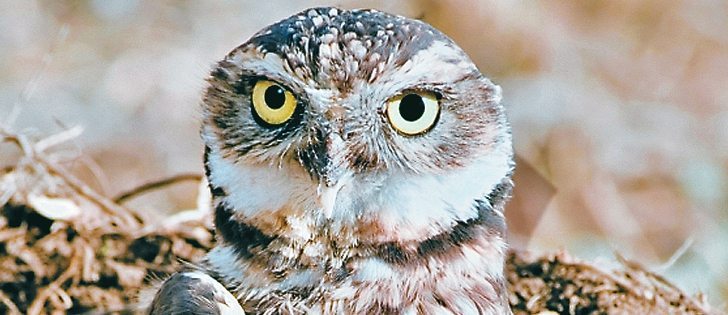Livestock and burrowing owls make good pasture partners.
Lorrie Reed, who farms near Elrose, Sask., said he has seen the proof first-hand.
“If there’s cows in there, it’s good for the burrowing owls because they keep the grass short so the burrowing owls can see predators coming and can hopefully survive,” said Reed. “(The owls) use the manure for nesting material as well.”
When Reed was growing up on the family farm, he used to see five or six pairs of burrowing owls each year.
Read Also

Farming Smarter receives financial boost from Alberta government for potato research
Farming Smarter near Lethbridge got a boost to its research equipment, thanks to the Alberta government’s increase in funding for research associations.
“Now you’re lucky to see one.”
The owls rely on other animals, like badgers and gophers, to create the burrows in which they make their homes.
Reed said in places where there are no pre-existing burrows, artificial ones can be dug and the owls will nest there.
He has also seen them in burrows along roads and in ditches.
“We caught one that was walking down the road that couldn’t fly,” he said.
At this time of year, juvenile owls are capable of flight and start to leave their nests to hunt for themselves. It is a dangerous time for the inexperienced birds because they tend to forage in roadside ditches.
“Collision with vehicles happens often,” said Kaytlyn Burrows, the habitat stewardship co-ordinator for Nature Saskatchewan.
“Juvenile owls are especially vulnerable to this because they hunt for insects on the sides of roads and just haven’t learned what a vehicle is.”
The small owls also have many predator pressures.
“Everything is a predator: other owls, coyotes, badgers, hawks, even other burrowing owls,” Burrows said.
The population has been steadily declining. They were first declared a threatened species in 1979 and by 1995 were put on the endangered list, where they remain.
Estimates put the prairie population at 500 to 800 pairs across Alberta and Saskatchewan.
Their decline is attributed to many factors but human interference tops the list.
“One of the big ones is habitat loss and fragmentation (cultivation),” said Burrows.
“Our cities are sprawling and we’re losing land that way as well. Other factors (include) decreased food availability. Because they eat so many insects, pesticides have an effect. Rodenticides and other poisons also have an effect on them.”
Burrows is now busy contacting the nearly 400 participants in Operation Burrowing Owl (OBO), including Reed.
OBO relies on landowners to help monitor owl population. Every year participants are asked whether the burrowing owls have returned to their land.
“Contributing to population monitoring of this species would not be possible without these landowners,” said Burrows. “They are our eyes and ears.”
Most OBO participants no longer have nesting owls but their role in conserving habitat remains essential for any possible population increase.
“The hope is one day (burrowing owls) will be down listed and increasing their population,” Burrows said, but this year’s tally shows a further decline.
“I’ve had very few sighting calls this year compared to last year,” said Burrows. “I had 15 sighting calls last year and this year I’ve had three.”
Anyone who sees a burrowing owl can call Operation Burrowing Owl at 800-667-HOOT (4668).


















